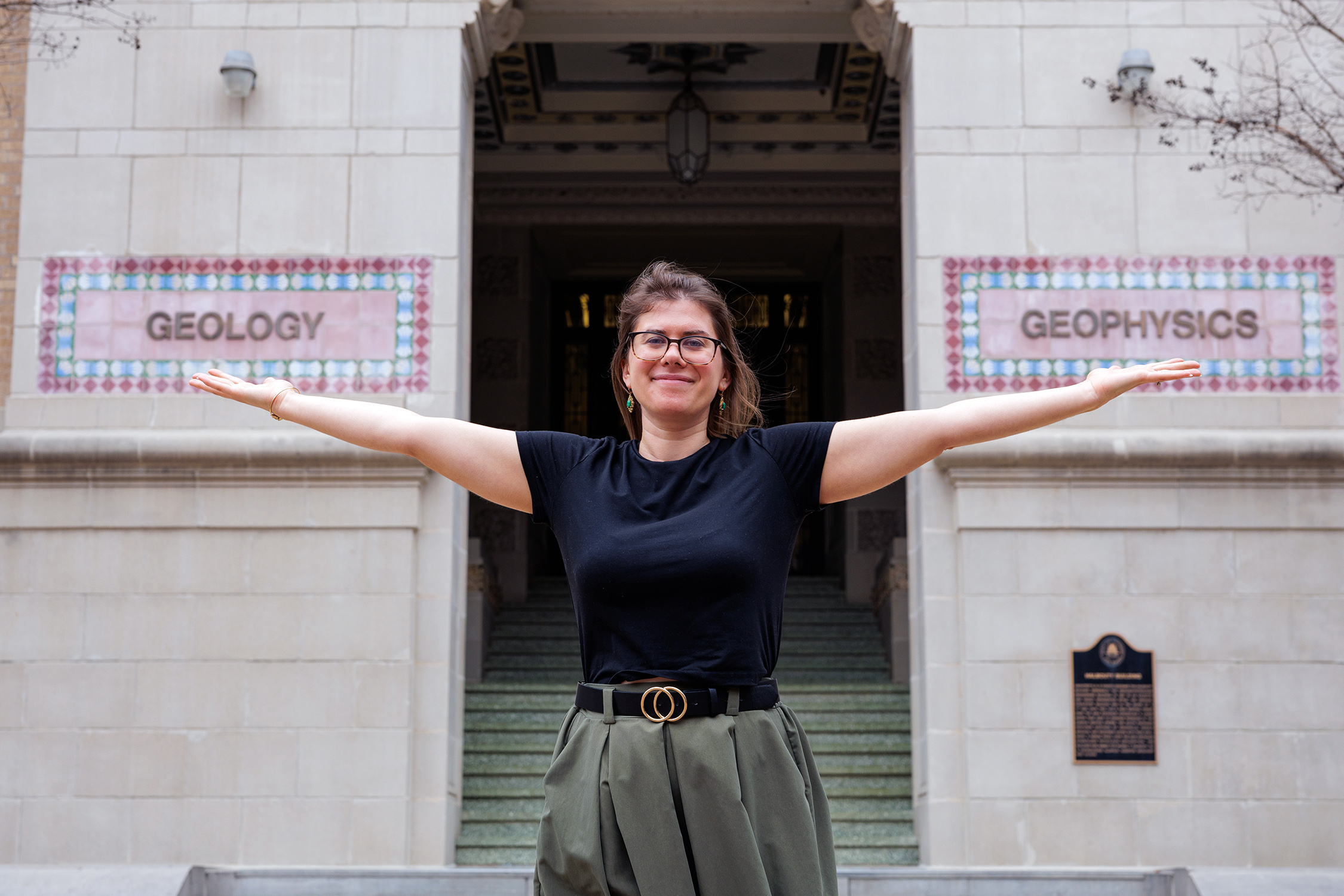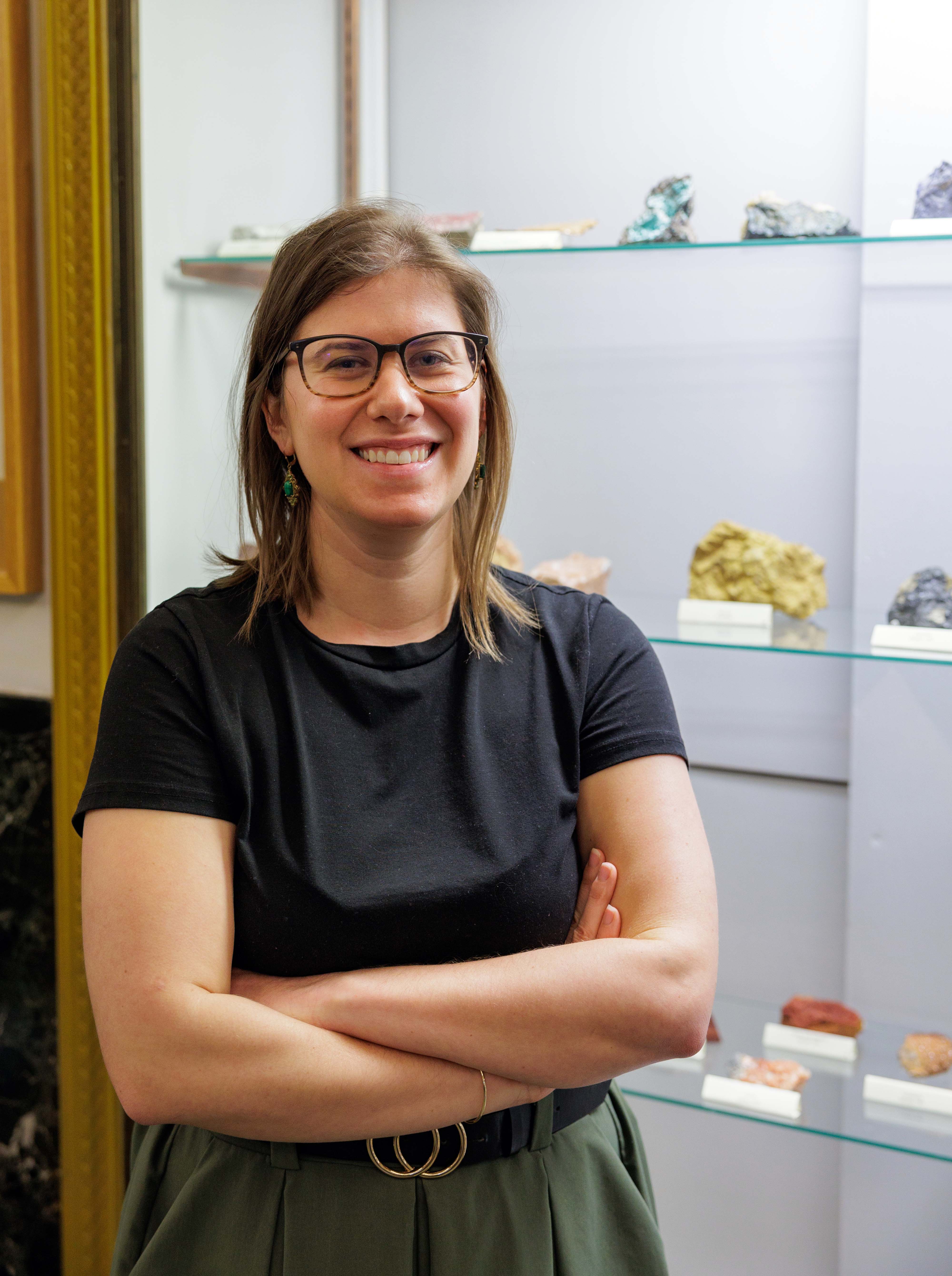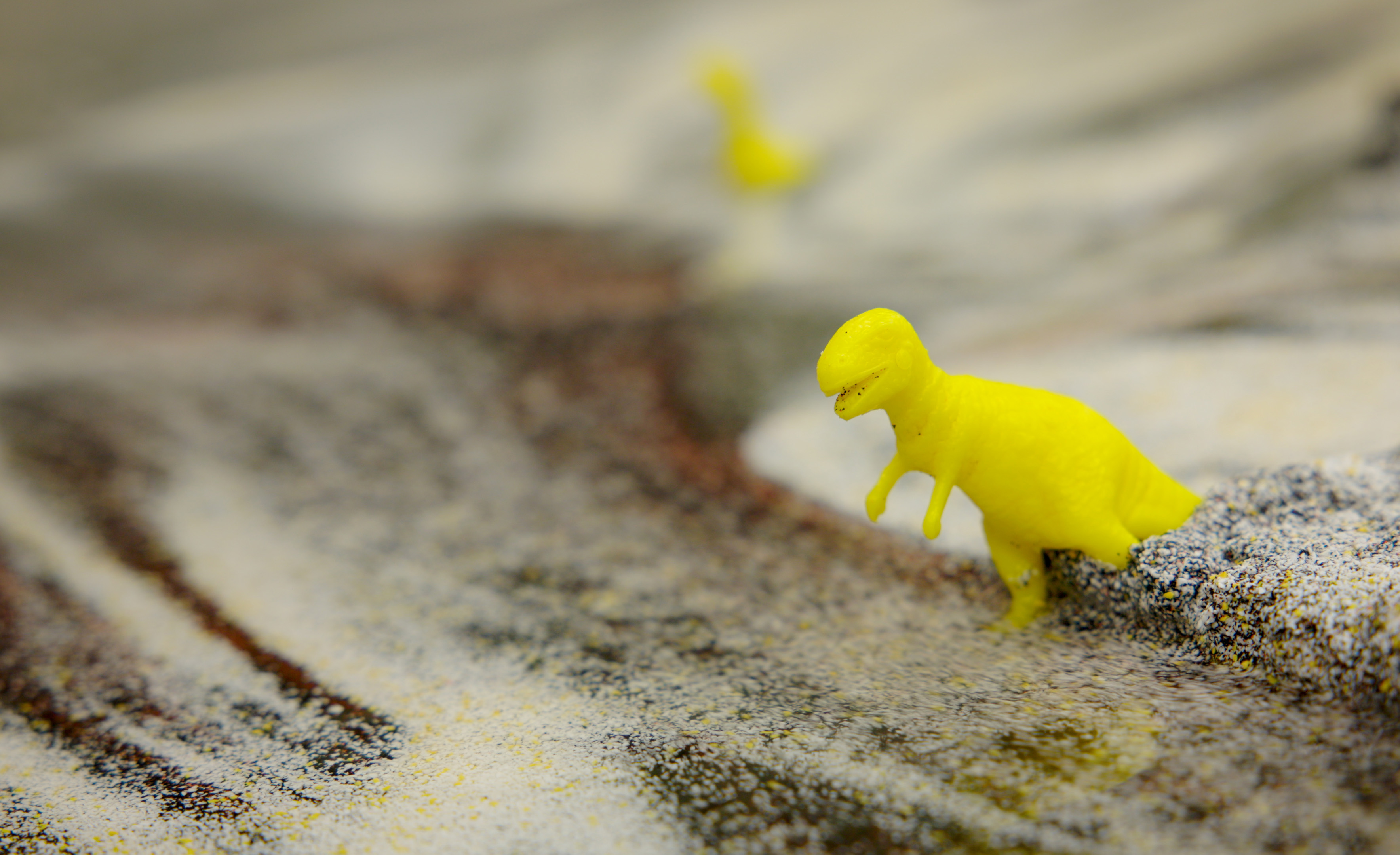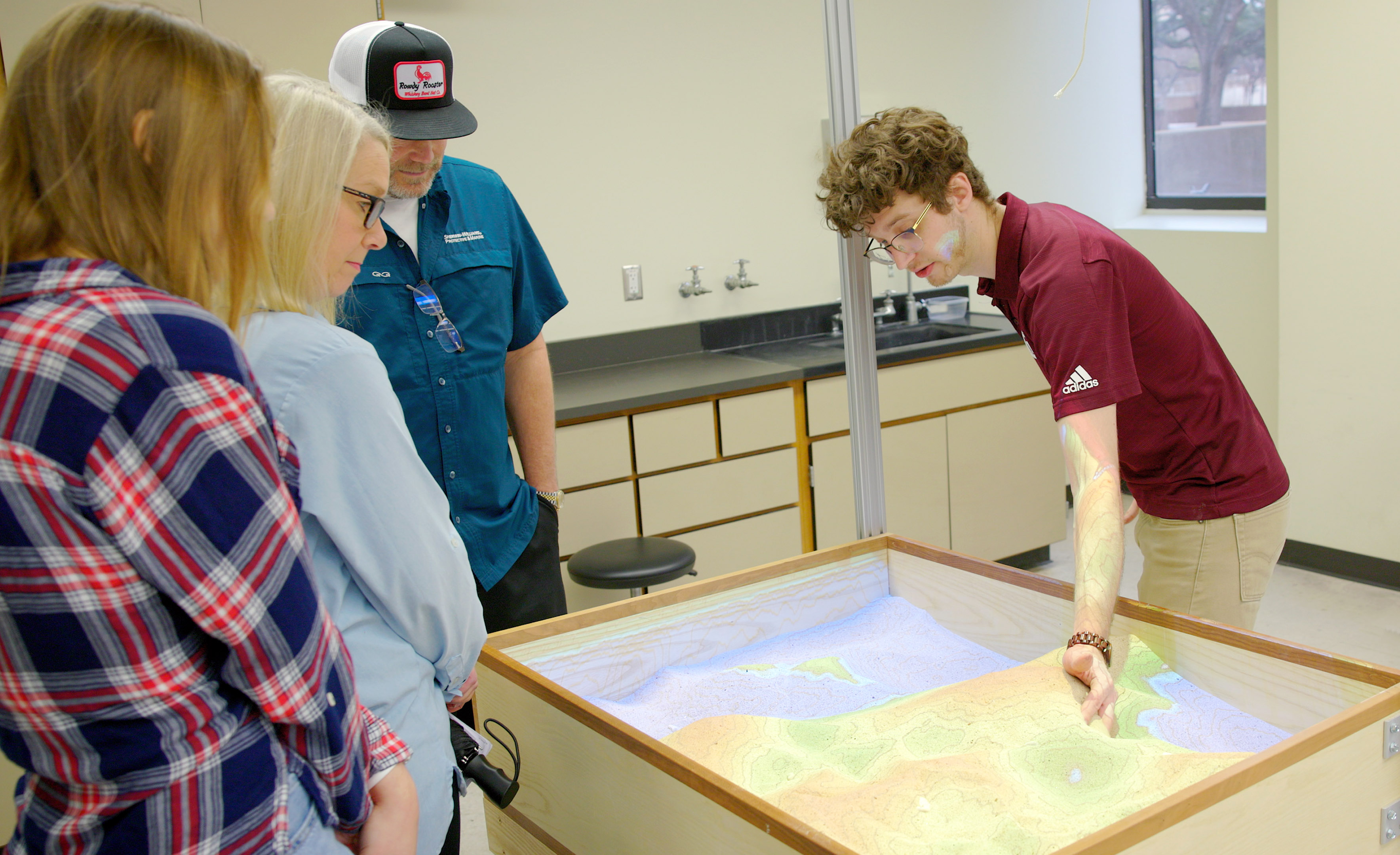
Dr. Brandi Lenz, an instructional assistant professor and undergraduate program director in the Department of Geology and Geophysics at Texas A&M University since June 2022, overcame challenges including dropping out of college and navigating motherhood during her graduate studies. Her determination, fueled by childhood fears of natural disasters, led her to achieve her dream of teaching geology.
Lenz recently took time out from her teaching and research to reflect on her winding path to the present and lessons learned along her lifelong educational journey personified through a perfect mix of professional and personal.
Introduce yourself and tell us a bit about your background.
My name is Brandi Lenz, and I am an instructional assistant professor in the Department of Geology and Geophysics at Texas A&M. I started here in June 2022.
I completed my A.S. degree at Columbus State Community College in 2016, followed by my B.S., M.S. and Ph.D. in Earth science from The Ohio State University in 2017, 2019 and 2021, respectively. Despite this seemingly conventional educational trajectory, my journey has been anything but traditional. In fact, I initially dropped out of college.
I was born in Pittsburgh and spent the majority of my childhood there until my sophomore year of high school. Following that, my family and I relocated several times, eventually leading me to graduate from high school in the Dallas-Fort Worth area.
Immediately after high school, I enrolled at the University of Texas at El Paso as a geology major. However, I found myself navigating the challenges of living independently and juggling full-time work in the telecommunications industry to support myself financially. The strain of this lifestyle led to burnout, prompting me to drop out after about a year. Returning to my hometown, I transitioned into the information technology field and briefly served in the military (Army National Guard), though my time was cut short due to a pelvis fracture during basic training.
Following these experiences, I got married and realized my passion for geology, compelling me to return to academia to pursue my dreams. My husband and I made the decision to relocate to Columbus, Ohio, where I was fortunate to be accepted into The Ohio State University. After that, driven by my strong love for the subject, I stayed committed until I got my Ph.D. just a few years ago.
My graduate school experience took an even more unconventional turn. During my second year in the Ph.D. program, I found out I was pregnant. I was eight months pregnant when I passed my candidacy exams. My son was born just a few days after I received my master's degree and has become a significant part of my journey ever since.
As a graduate student, affording childcare was challenging, so my son often accompanied me to school while I taught as a teaching assistant, which funded my entire graduate career. I would carry him strapped to me, hoping he would nap while I taught. Students loved it! To top it off, I graduated with my Ph.D. on Mother's Day, which felt like the perfect culmination of my academic journey.
After completing my Ph.D., I spent a year working as a part-time instructor at three different institutions, all at the same time. I taught environmental geoscience at Ohio State, physical geography at Ohio Wesleyan University and planet Earth labs at the University of Dayton.
And now, I am here today!
My passion for geology started when I was a child because of my fear of natural disasters, and now, I get to teach about natural disasters at Texas A&M. This is truly my dream job!
What kind of research projects have you recently worked on?
My latest research project focused on studying the kinematics of submarine landslides off the coast of Oregon. I completed and published the final paper on this research just last year.
Can you explain the main points of your research?
Submarine landslides can create and/or amplify tsunami events, causing destruction of life and property. Landslide tsunamis depend heavily on how much and how fast sediment has moved. The “how much” question can be relatively easy to constrain, but the “how fast” question is much more difficult to answer. I focused on trying to answer three main scientific questions.

1. What can reflection seismic data tell us about how underwater landslides move?
To address this, I focused on the 44-North slide off the coast of Oregon. I collected seismic data across the landslide blocks and main head scarp. The data revealed a deformation zone in the sediments caused by the impact of the landslide blocks. The subsurface features indicate that the landslide moved rapidly and with significant force. These findings were published in Geosciences (Lenz et al., 2018).
2. How does underwater landslide velocity relate to the deformation zone?
We developed a new method to estimate the velocity of previous underwater landslides by analyzing the dimensions of the impact-induced deformation zone. Determining slide velocity is crucial for understanding landslide hazard severity but is often challenging using traditional methods. By studying the 44-N slide off Oregon's coast with high-resolution reflection seismic data, we found that it likely moved swiftly (up to 60 miles per second) with significant momentum, as indicated by observations of the deformation zone. Given the importance of slide velocity in landslide-generated tsunamis, our approach has implications for assessing coastal hazards worldwide. Although our study focused on the 44-N slide, this method is applicable to other landslides with similar deformation zones, as outlined in our publication in Geophysical Research Letters (Lenz et al., 2023).
3. What is the history of slope failures along the broader Oregon margin?
My research explored differences in underwater landslide styles between northern and southern Oregon, identifying 133 landslide deposits along the Oregon margin. Additionally, I found that the 44-N slide is not unique to this area, with at least three similar events indicated in the southern Oregon margin. While such deformation has only been observed offshore Oregon and in a smaller example in a Swiss lake, my study suggests that underwater landslides are more common and disintegrative in the north than in the south. Despite their rarity in the south, the fast-moving thick cohesive style of failure along the southern Oregon margin may pose a higher risk of landslide-induced tsunamis. These findings were published in Basin Research (Lenz and Sawyer, 2021).

Discuss your role as the undergraduate program director in Texas A&M Geology and Geophysics. What are the primary objectives you aim to accomplish in this position?
I became the undergraduate program director in the Department of Geology and Geophysics in the fall of 2023. My goals in this position are to help support our students and provide them with the best possible path to prepare them for their futures. I have thoroughly enjoyed getting to know our current students and look forward to meeting new students each semester. I hope by completing a degree here with us that they are better equipped with the tools they need to hit the ground running and solve today’s real-world problems.
What do you like most about working at Texas A&M?
I cannot stress this enough — this is my dream job! I get to teach my favorite topics at one of the greatest and largest institutions in the country to our amazing students. The students here are phenomenal. The undergraduate courses I teach are GEOL 101: Principles of Geology and GEOS (soon to be GEOL) 110: Disasters and Society. I absolutely love getting to share my passion for geology and disasters with large audiences through education.
I also love interacting with our graduate students as well, especially our teaching assistants. I recently partnered with the Center for Teaching Excellence and developed a new graduate seminar called Teaching Earth Science to help our graduate students prepare for academic positions in teaching. On top of teaching and mentoring, I also had the opportunity to implement new teaching tools for our department — an augmented reality sandbox to help students visualize 3-D features on Earth and a stream table to help students see long-term hydrological processes in real time. I am so lucky I have a job where I get to play with sandboxes and water in the name of education!
I cannot stress this enough — this is my dream job! I get to teach my favorite topics at one of the greatest and largest institutions in the country to our amazing students. The students here are phenomenal.


